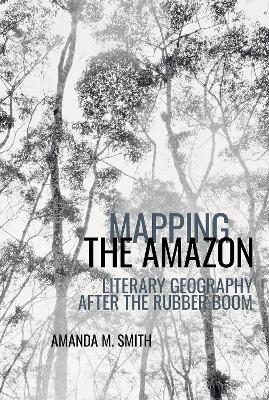American Tropics: Towards a Literary Geography
1 primary work
Book 8
An analysis of the political and ecological consequences of charting the Amazon River basin in narrative fiction, Mapping the Amazon examines how widely read novels from twentieth-century South America attempted to map the region for readers. Authors such as Jose Eustasio Rivera, Romulo Gallegos, Mario Vargas Llosa, Cesar Calvo, Marcio Souza, and Mario de Andrade travelled to the Amazonian regions of their respective countries and encountered firsthand a forest divided and despoiled by the spatial logic of extractivism. Writing against that logic, they fill their novels with geographic, human, and ecological realities omitted from official accounts of the region. Though the plots unfold after the height of the Amazon rubber boom (1850-1920), the authors construct landscapes marked by that first large-scale exploitation of Amazonian biodiversity. The material practices of rubber extraction resurface in the stories told about the removal of other plants, seeds, and minerals from the forest as well as its conversion into farmland. Smith places the counter-discursive impulses of each novel in dialogue with various modernizing projects that carve Amazonia into cultural and economic spaces: border commissions, extractive infrastructure, school geography manuals, Indigenous education programs, and touristic propaganda. Even the "novel maps" studied, however, have blind spots, and Mapping the Amazon considers the legacy of such unintentional omissions today.
